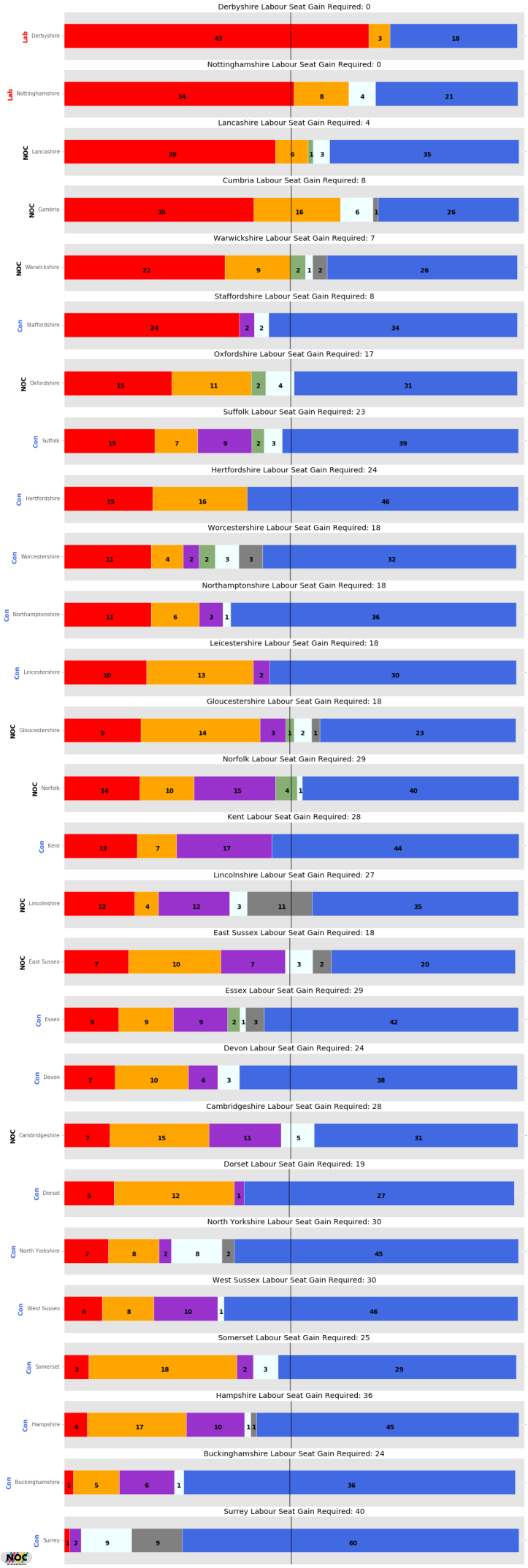Welcome to the first post in our series on the 2017 local elections! There’s a lot up for grabs in these elections with 27 county councils, 7 unitary authorities, Doncaster metropolitan council, 12 mayorships, and all the Scottish and Welsh councils. Far too much to cover in a single post so we’ll provide an overview of each of those categories in turn before moving on to a series of detailed examinations. First up we’re going to look at county councils. These are a part of the two-tier local government structures with various responsibilities split between the county and multiple district councils.
There is the potential for plenty of political drama given that these 27 councils put up all of their seats for election (the last elections being 4 years ago in 2013). Some councils boundaries are yet to be finalised but we count approximately 1800 county council seats being contested. The Conservative party is dominant, currently holding over half the seats. The clue is in the name: non-metropolitan county councils. These are fairly rural areas and as such natural Conservative territory.

In terms of council control the Conservatives hold outright control of 16 of the councils, with Labour controlling 2 and 9 in No Overall Control. Of the 9 NOCs the Conservatives rule in minority administrations in 5 of them. The award most unusual administration goes to Norfolk with an unlikely rainbow coalition of Labour, UKIP, and the Liberal Democrats with support from Independents and Greens all working together to deprive control of the council from the Conservatives.
For the Labour party the results of the 2016 local elections were subject to intense, bitter, debate between supporters of Jeremy Corbyn and his detractors. His more ardent critics had clearly expected to lose a considerable number of seats and their doom-laden predictions were not met with Labour holding essentially even in the results. His supporters retort that he replicated the high water mark set by Ed Miliband in 2012. Don’t be surprised if Corbyn’s critics set a much higher bar for him to beat in these elections. The county councils represent exactly the kind of Conservative territory that his critics say that Labour needs to win over if it is going to be on course for a victory in a general election, especially in areas like the Midlands. Conversely, also don’t be surprised when Corbyn’s supporters point out that the 2013 elections were also a good year for Ed Miliband, prior to which 26 out of the 27 county councils had been in Conservative control with one NOC. The one direction Corbyn’s Labour really don’t want to go in, of course, is backwards.
Given that the current polling averages give the Conservatives approximately a 10 point lead in voting intention this is very much an uphill struggle for Labour. Their hope lies in the substantial increase in membership in areas the Labour party was previously stagnant alongside the energy of grassroots Corbynite organisation Momentum to fight a strong local election campaign and motivate voters who had previously assumed Conservative victory was a foregone conclusion. Given that in non-general election years local election turnout is notoriously low getting out the vote can be just as, if not more, important than winning people over.
The Liberal Democrats have traditionally had strong local campaigns and leader Tim Farron must be hoping to produce an improved set of results as a part of his project to rehabilitate the party from the damage by association it has suffered from the coalition years. But, similarly to Labour, the recent national polls offer him little comfort. Liberal Democrat targets will be in the south west where the party used to control the Devon and Somerset councils prior to the 2009 local elections.

You must be logged in to post a comment.